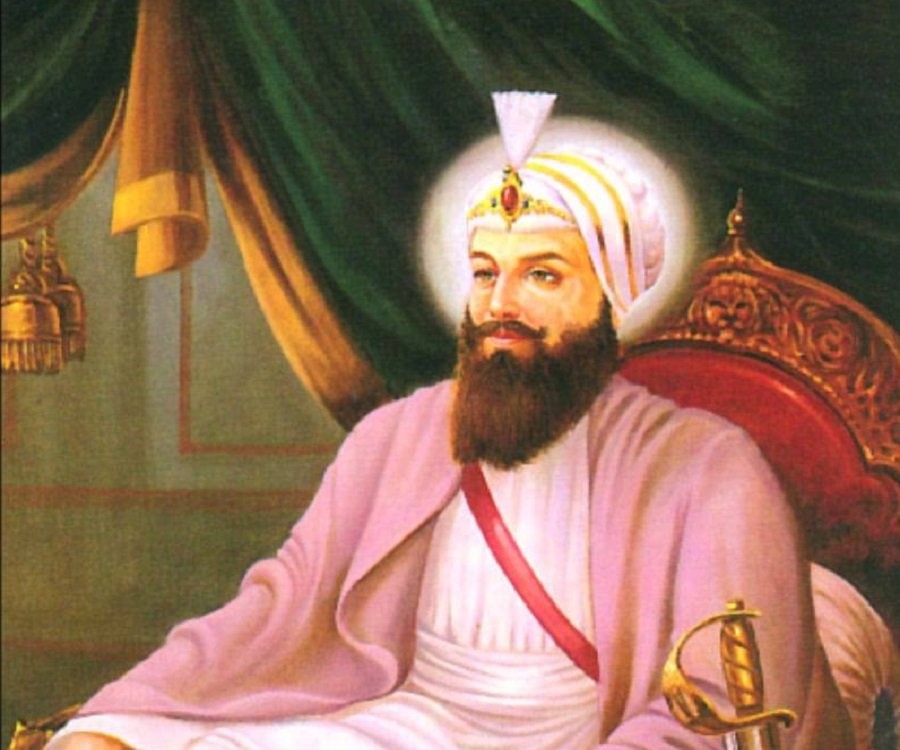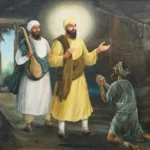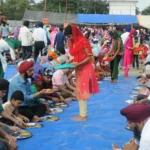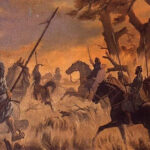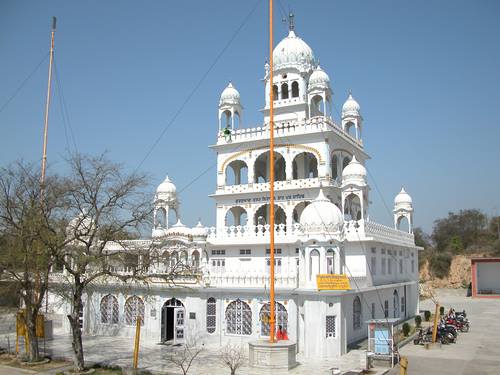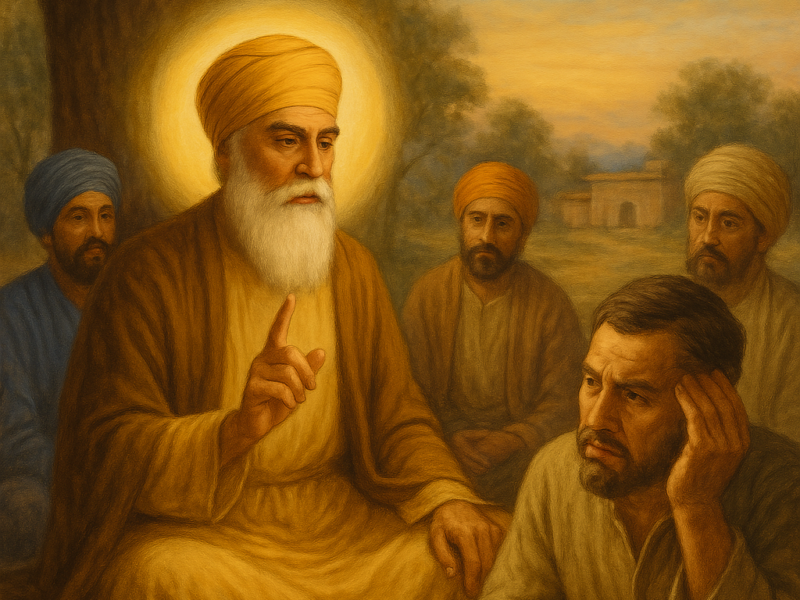Har Rai was a child with a high level of sensitivity. According to legend, he sobbed since he had injured a rose bush by brushing across it and accidentally knocking some petals to the ground. At the age of 14, he was appointed Guru. In keeping with his grandfather’s wishes, he did not disband Guru Hargobind’s operating army of Sikh Warriors (Saint/ Soldiers). He always had 2,200 mounted men with him. Even though he never engaged in any clear political or armed conflict with the Mughal Empire, Guru Har Rai has always been a peaceful man who encouraged the Sikhs’ military spirit.
Guru Har Rai has a great deal of sympathy towards animals. He went hunting frequently, but he never shot anything. He used to catch sick and damaged creatures and put them in a zoo he had established. The animals would’ve been given proper treatment there before being released back into the wild after they had recovered. He only killed animals that were terminally ill or in excruciating pain with little hope of recuperation. In such circumstances, he would kill them and put an end to suffering.
Har Rai Ji also travelled to Lahore, Sialkot, Pathankot, Samba, Ramgarh, and other cities in Jammu and Kashmir. He established 360 places for Sikh missionaries (Manjis). He also attempted to reform the previous corrupt Masand system by appointing religious and dedicated individuals as Manji leaders, such as Sure Shah, Sahiba, Sangtia, Mian Sahib, Bhagat Bhagwan, Bhagat Mal, and Jeet Mal Bhagat (also referred to as Bairagi).
Guru Har Rai established three missions and emphasised the value of langar, saying that no one who came hungry should be turned away. He exhorted Sikhs to work honestly and not to defraud anyone. He emphasised the value of early morning worship and scripture, claiming that hymns helped the heart and soul regardless of whether or not words could be understood. He advised kings to govern humanely and without oppression, to pay attention only to their spouses, to abstain from drinking, and to be available to their citizens at all times. He proposed that they attend to the needs of the people by constructing wells, bridges, schools, and religious ministries.
Healing the Enemy
Dara Shikoh, Shah Jahan’s oldest son and heir apparent, became critically ill after his brother Aurangzeb, who wanted to the throne, poisoned him. His only chance of recovery, according to the greatest doctors, was as he’d been given medications that they didn’t have on hand.
Shah Jahan issued a humble request for treatments for his child after learning that Guru Har Rai had healing potential and these uncommon remedies. The Emperor’s messengers were given the unique medications, along with a pearl that was to be pounded into powder and added to the treatment.
Guru Har Rai was questioned by the Guru’s Sikhs as to why he was assisting Shah Jahan’s son, an opponent who had feuded with both his great-grandfather, Guru Arjan Dev, and his grandpa, Guru Hargobind, and was undoubtedly his enemy.
“Behold, a man smashes blossoms with one hand and presents them with the other, but the blossoms scent both palms equally,” the Guru said. The sandal tree is cut down by the axe, yet the sandal scents the axe. As a result, when we are treated unfairly, we should return good.”
Dara Shikoh’s life was saved by the drugs. The Emperor expressed his gratitude to the Guru and promised that he would never bother him again.
More about Guru Har Rai Ji
Har Rai got marital coaching as a child and became skilled with weapons and horses. Guru Har Rai had a militia of 2,200 soldiers at his disposal. The Guru avoided conflict with the Mughals but was caught into the intrigue of succession when the Mughal emperor’s heirs contended for his throne, and the eldest, Dara Shikoh, sought help from Guru Hair Rai. When pursuing Dara Shikoh, the Guru earned the wrath of his vicious younger brother, Aurangzeb, by arresting his army. In the meantime, the Guru advised Dara Shikoh that only a divine kingdom can survive forever. Aurangzeb ascended to the throne in the end.
Har Rai expressed regret as a child after his robe snagged a rose shrub and ruined its petals. The healing qualities of herbs were taught to Guru Har Rai. He treated the wounds of injured animals and put them in a zoo where he fed and cared for them. Guru Har Rai provided a cure for his eldest son, Dara Shikoh, who had been poisoned with tiger whiskers after he was asked for assistance by his opponent, Mughal Emperor Shah Jahan. The Guru emphasized that the actions of others should not determine the behaviour of a Sikh, and the Guru, like a sandalwood tree that scents the axe that cuts it, returns good for evil.
Several accounts show that Har Rai wedded the 7 daughters of the Sikh Daya Raam of Anupshahr, who resided on the banks of the Ganges in Uttar Pradesh’s Balundshahr District when he was approximately ten years old. According to oral history, he only married Sulakhini, the daughter of Daya Rai, a Sillikhatri of Arup Shanker. According to another source, he married four princesses and their handmaids. The dates are all the same. Har Rai had a daughter and two boys. Har Krishan, Guru Har Rai’s youngest son, was named as his successor.
When Guru Sahib returned from a tour of the Malwa and Doaba districts, Mohamad Yarbeg Khan (son of Mukhlis Khan, who was killed in battle by Guru Hargobind) attacked Guru Sahib’s kafala with a force of a thousand armed men. A few hundred Saint Soliders of Guru Sahib repelled the unlawful attack with amazing courage and valour. The opponent was heavily outmanned and departed the site. This self-defence strategy (appropriate response to the unjustified armed attack of the privileged Muslims) set an example for people who believed in “Ahimsa Parmo Dharma,” or “non-violence.” Guru Sahib frequently bestowed valour awards to many Sikh warriors.
